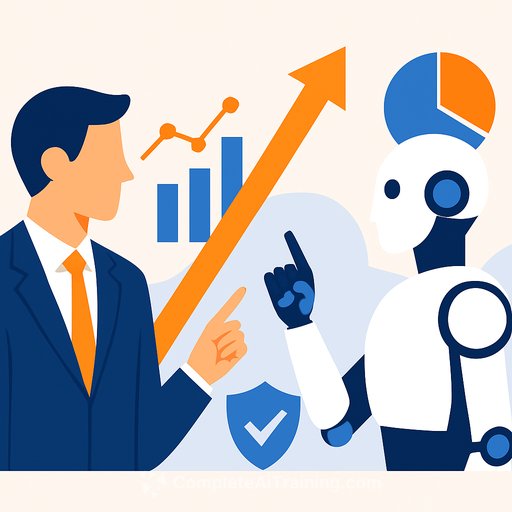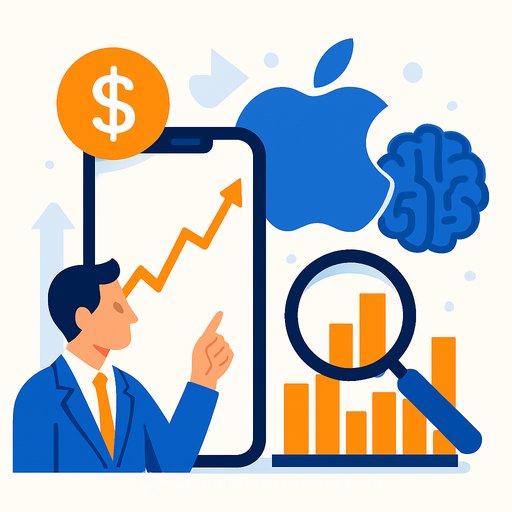The Augmented Strategist: Embedding AI into the Strategy Process Using the Dynamic Strategy Map
Plans break when the world shifts faster than your planning cycle. Trade routes change overnight, tech resets business models, and customer expectations flip with culture and media.
That volatility exposes a paradox: human intuition is essential but biased; pure automation is fast but blind to context. The answer isn't picking a side. It's pairing judgment with machines inside a disciplined process.
This is where the Dynamic Strategy Map (DSM) comes in. It gives leaders a structure to plug AI into the strategy lifecycle so decisions stay grounded, options expand, and execution adapts in real time.
The New AI Toolkit for Strategists
- AI & Analytics - "What is happening?"
Pattern recognition and forecasting across customer behavior, markets, and operations. It cuts through noise and highlights signals that matter. - Generative AI - "What if?"
Creates options, narratives, and alternative futures. Useful for brainstorming models, testing framing, and communicating direction fast. - Agentic AI - "Make it happen."
Autonomous task execution. Given a goal, agents analyze, break work into steps, and trigger actions across systems without micromanagement.
These tools amplify leadership. They reduce bias, bring evidence into the room, and connect decisions to action. Major platforms already embed them across everyday workflows.
The Augmented Strategy Loop with the DSM
Step 1: Situation Analysis - See the Strategic Terrain Clearly
AI Role: Telescope and microscope in one.
The Problem: Leaders face noise, missed weak signals, and slow, fragmented scanning.
The AI Solution: Language models and analytics fuse reports, customer feedback, social sentiment, and performance data to surface relevant shifts in real time. Context-aware systems now reason across sources, not just summarize them.
Current Use: Unilever integrates social listening, purchase data, and cultural trends to spot emerging needs and inform product bets.
Emerging: Context-aware RAG systems ingest live data streams and deliver timely, contextual insight like a tireless research analyst.
Step 2: Surface Assumptions & Uncertainties - Challenge the Comfort Zone
AI Role: Contrarian assistant.
The Problem: Confirmation bias and groupthink lock in fragile ideas.
The AI Solution: Models simulate counterfactuals, flag logical gaps, and "red team" strategy docs. They also detect shifts in stakeholder behavior that conflict with legacy beliefs.
Current Use: Bridgewater uses AI-driven simulations to stress test investment theses before deploying capital.
Emerging: Multi-agent adversarial systems that stage strategy conflicts to expose weak assumptions.
Step 3: Explore & Test Scenarios - Expand Strategic Imagination
AI Role: Foresight engine.
The Problem: Static, linear scenarios miss non-linear interactions and feedback loops.
The AI Solution: Dynamic simulations and agent-based models test shocks, moves, and ripple effects. Generative models help craft plausible narratives you can act on.
Current Use: Shell blends digital twins, modeling, and predictive analytics to probe energy futures and geopolitical shifts.
Emerging: NVIDIA Omniverse enables full-system digital twins and large-scale simulations to trial responses to market and regulatory change.
Step 4: Develop Strategic Options & Trade-Offs - Widen the Possibility Set
AI Role: Ideation catalyst.
The Problem: Legacy thinking, politics, and fatigue narrow options and blur trade-offs.
The AI Solution: Generative and agentic systems propose alternatives based on market signals and internal capabilities. Multi-agent simulations reveal competitor, supplier, and customer reactions to each option.
Current Use: Siemens uses generative tools to identify adjacencies and test new service and business model plays.
Emerging: Sandbox environments where agentic AIs pressure-test pricing, launches, and partnerships across an ecosystem.
Step 5: Make Strategic Choices - Commit with Confidence
AI Role: Structured commitment engine.
The Problem: Decisions stall or get watered down by bias, inertia, and partial data.
The AI Solution: Predictive models run pre-mortems, simulate failure points, and quantify value at risk. They support dynamic prioritization and faster course corrections.
Current Use: Salesforce's Einstein flags high-risk, low-impact features early, avoiding costly misallocations.
Emerging: Decision intelligence that blends GenAI with BI to recommend priorities and align choices with live KPIs.
Step 6: Identify Risks & Mitigation - Spot Trouble Early
AI Role: Early warning system.
The Problem: Backward-looking risk models miss new threats across cyber, regulatory, and reputation domains.
The AI Solution: Self-learning agents model "pattern of life," detect anomalies, and simulate consequences. Synthetic data lets you stress test against events you've never seen.
Current Use: Netflix's Chaos Monkey forces resilience by introducing controlled failure.
Emerging: Darktrace PREVENT maps likely attack paths, stress tests defenses, and surfaces vulnerabilities before incidents.
Step 7: Adaptive Execution & Feedback Loops - Close the Loop
AI Role: Co-pilot.
The Problem: Execution drifts from intent, feedback lags, and leaders fly blind between reviews.
The AI Solution: Agentic systems track goals, spot drift, and trigger interventions. GenAI synthesizes customer sentiment, team signals, and market response to recommend pivots.
Current Use: Spotify's squad model uses real-time testing and experimentation to keep product strategy in motion.
Emerging: Enterprise strategy agents that monitor KPIs continuously and initiate reprioritization when the data changes.
The Inseparable Partnership
AI handles data and execution at speed; leaders hold the context, values, and judgment. That split isn't a compromise-it's the advantage.
Your job shifts from "have all the answers" to "ask better questions, challenge assumptions, and create the conditions where better answers show up." Think coach and conductor, not soloist.
Implementation Roadmap for Practitioners
- Start with a pilot: Pick one DSM step with pain (e.g., external scanning) and prove value fast.
- Get your data in order: Audit sources, fix silos, and define critical signals. Clean, connected data multiplies ROI.
- Upskill the team: Teach prompt craft, scenario framing, and data literacy. If you want a shortcut, explore practical AI courses by job role.
- Set governance: Define privacy, ethics, model use, and decision rights with Strategy, IT, Legal, and Risk at the table.
- Measure what matters: Track time-to-insight, options generated, scenario coverage, and pivot speed.
- Quick wins: AI dashboards, NLP for market scanning, and automated customer feedback summaries.
- Strategic initiatives: Embed AI into scenario planning and proactive risk anticipation.
- Long-term: Stand up agentic strategy agents that monitor execution, feed insights into planning, and connect with governance.
Conclusion: From Map to Motion
AI won't replace strategic leaders. Leaders who integrate AI into how they think, decide, and execute will outperform those who don't.
The DSM provides the structure. AI provides the engine. Together, strategy becomes responsive, resilient, and grounded in reality.
Start small. Prove value. Scale what works. Treat augmentation as core to the function, not a side project. If you want curated, no-fluff learning paths to speed this up, check the latest options at Complete AI Training.
The map is ready. The engine is running. Time to move.
Your membership also unlocks:






